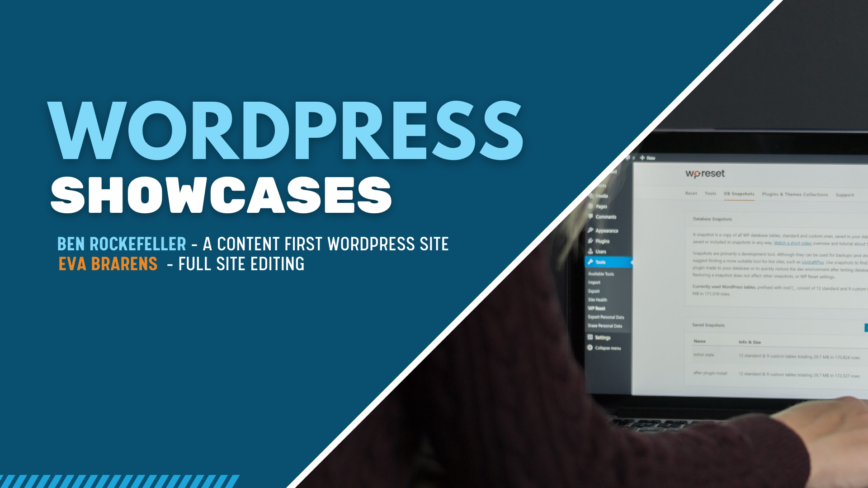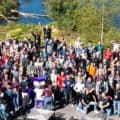The Antwerp WordPress meetup group is one of the most active local groups and our great volunteers organise events on a very regular schedule. The dates for next year have been announced and I’m already looking forward to the last Tuesday of every odd month in 2023!
2 different showcases were presented; Ben Rockefeller built his content website with the existing tools in WordPress, as did Eva who used Full Site Editing.
A Content First WordPress site
There is much to discuss about food and health and Ben Rockefeller created the healthviafood.org website with the goal to provide summarised information on this subject. Ben wrote a lot of content which he structured using the WordPress Classic Editor. The Astra-based website is hosted on SiteGround and does not use any custom code as that can cause problems for site maintenance.
Plugins are defined as proven once they have had more than 10 000 installs. One of the most important plugins is WP Optimize, created by Frank Goossens. Another great tip, maybe more of a reminder, is to use the Broken Link Checker. Every once in a while you should check your website for broken links as webpages get removed, change domain names etc. so if you don’t check regularly, you could end up with many broken links. This will annoy your visitors and could even negatively affect your search engine rankings.
Thanks Ben for the showcase!
Full Site Editing: It’s Possible

The second showcase, by Eva Brarens, focuses more on how you can build your website with the Full Site Editing features of Gutenberg in WordPress. To experiment with Full Site Editing, Eva opted for a pretty straightforward website with no custom features. The website has a custom theme and a hybrid setup. In the next section I’ll go over the Good, the Bad and the Meh features.
The Good
Templates are readable since they are coded in HTML with specific variables. Why is this good? You can generate much of the code through the backend by creating a template from the admin interface which means that even non-technical users can do it. Creating new templates for prototyping works like a charm!
In addition, you can control the available Gutenberg features through the theme.json file. Putting patterns and custom code into a child theme helps you to maintain the code efficiently and keep it organised.
The Bad
The biggest problem is that the styling in Gutenberg does not look the same as on the frontend. As a (frontend) developer, you will have more work to make it look the same while editing. On top of this, there are the default WordPress styles that can be disabled or totally overruled. At the moment, there is no (easy) way to disable loading the styles of a single block. But, Eva helpfully wrote a blog post about it. However, new features and styles will probably also be overwritten.
The Meh
Generated templates are, in many cases, more complex than needed. The new features of fluid typography look promising if implemented efficiently, otherwise they add extra complexity to the generated templates. Another “Meh” factor is the inconsistencies in the interface. Luckily, the Gutenberg project is in full development and gets better every day.
To conclude: Full Site Editing can definitely be used in production, although there are downsides to this.
Keep the website https://fullsiteediting.com close, to check for examples and code references.
Tips
When building a new website, there are always little gems to discover:
- Scheduling block visibility > Block Visibility
- Media manager > Filebird
- Analytics alternatives
– Matomo
– Koko analytics

